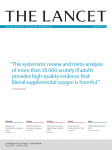BUY IT! You'll thank me later. Best medical critical care read since Marik's Evidence-Based Critical Care (just different). It comes with a free Inkling e-book version.
Pulm docs are like surgical intensivists: some of them are great, some suck. Most of us suck more than we think at modern (patho)physiology, and some just follow/perpetuate dogma (such as O2-induced apnea and hypercarbia in COPD). Keeping up takes a lot of time, and most intensivists are overworked as it is. Also, most teaching intensivists don't spend enough time with their patients to see the results of their therapies; they just assume the patient got worse because of the disease. Then they teach the same sh-t to the next generation.
Be skeptical about what you read (unless you see your patients getting better, which I have). I learned that from
@bigdan 
, as a fellow, back when I first became a cultist in the church of Marik. (Now that I am an attending, I am a cultist in multiple churches.)
This is the book (get the printed version and download the free ebook to your phone):
Amazon product
And this is a quote from it:

 , as a fellow, back when I first became a cultist in the church of Marik. (Now that I am an attending, I am a cultist in multiple churches.)
, as a fellow, back when I first became a cultist in the church of Marik. (Now that I am an attending, I am a cultist in multiple churches.) (Sorry if it comes across as anything less than.)
(Sorry if it comes across as anything less than.)
